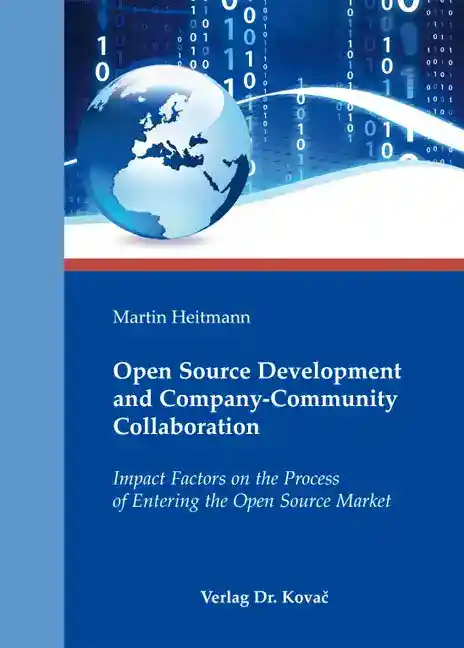Martin HeitmannOpen Source Development and Company-Community Collaboration
Impact Factors on the Process of Entering the Open Source Market
Schriftenreihe innovative betriebswirtschaftliche Forschung und Praxis, Band 348
Hamburg 2012, 268 Seiten
ISBN 978-3-8300-6732-0 (Print) |ISBN 978-3-339-06732-6 (eBook)
Zum Inhalt
This book analyzes impact factors on the process of entering the open source market. For this purpose, the author investigates antecedents of business model choice, search parameters for the selection of a suitable partner community and macro-organizational trends.
Since the early days of the “free software? movement and the “open source? movement millions of developers have created hundreds of thousands of software projects, which are now used widely by even more people worldwide. Among the most popular open source applications and operating systems are Linux, Mozilla and LibreOffice. Open source development means that everyone should have access to the software source code. Moreover, handling of individual copyrights and license issues are further main points of focus.
From a strategic management point of view, an often discussed question is how an open source-based firm could earn money with this kind of production model. Given that usually everyone can access the source code, it is not clear how innovative development could lead to any profits. Meanwhile, several open source business models have emerged whose sustainability is yet to be proven. In line with the general topic of this dissertation thesis, the first study asks how different antecedents could influence the selection of one of these business models. The results of this fuzzy-set qualitative comparative analysis show that the antecedents, which are on an internal organizational level, differ for each of these business models, while external antecedents and those on a technical level are more or less coherent.
The second study investigates how companies search for a suitable partner community or what factors they focus on when they found an own community with a series of interviews. In fact, even if the expectations of companies and communities match in many points, most companies decide upon the intended level of control or community performance first, before they opt for a certain community alternative (peer-founded or firm-founded communities).
While the first two studies were focused on a micro-organizational perspective, the third one addresses a macro-organizational perspective. The open source software firms and open source communities can each be seen as groups – here populations – of internally homogeneous and externally heterogeneous organization types. For a company, which is in the process of deciding if and how to enter the market for open source-based solution, it will be relevant to know which trends are present in the interplay of these populations. Questions arising from a deterministic or voluntaristic viewpoint are in how far increased network building takes place in order to shield one kind of organization against the other, in how far the companies successfully enter the open source project landscape, and if communities react with consolidating towards less but bigger projects. The results indicate an increasing interweavement of both populations, i.e. software companies gain more influence in open source projects. On the other hand, there is no indication of increased network activities from either kind of collaboration.
Kontaktmöglichkeit
Schlagworte
BetriebswirtschaftslehreCommunity GovernanceCompany-Community CollaborationErwartungsmanagementGeschäftsmodelleGeschäftsmodellwahlGlobale TrendsNetzwerkbildungOpen Source EntwicklungOpen Source SoftwareStrategisches ManagementIhr Werk im Verlag Dr. Kovač

Möchten Sie Ihre wissenschaftliche Arbeit publizieren? Erfahren Sie mehr über unsere günstigen Konditionen und unseren Service für Autorinnen und Autoren.
